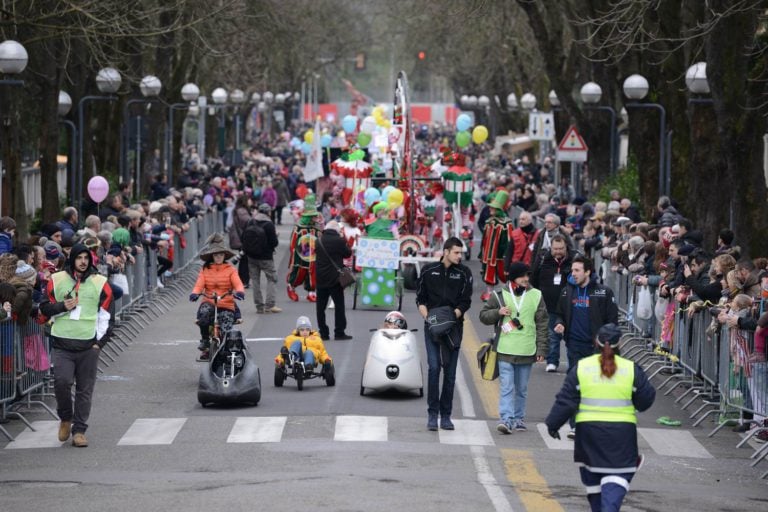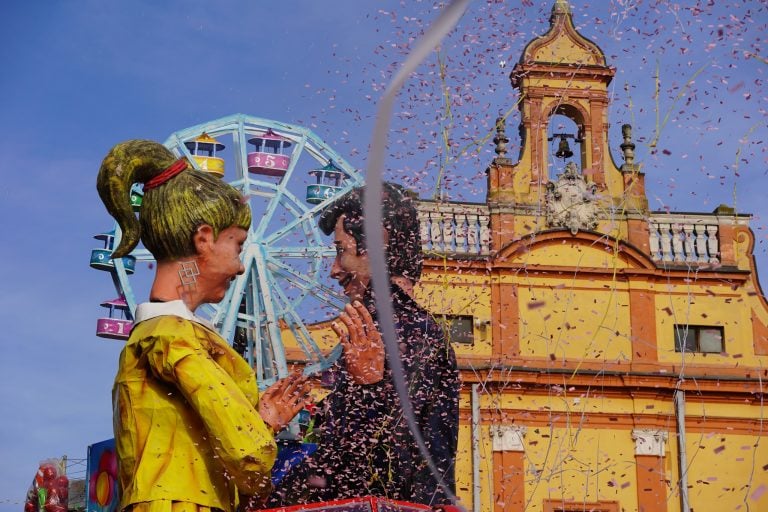A big celebration combining the sacred and the profane, that cheers up young and old with confetti, masks and brightly coloured floats. Carnival lovers, this post is for you!
Carnival in Emilia-Romagna is a serious matter, so much so that the Region has set up a register of historical Carnivals with the aim of enhancing these important events. The list currenly includes 18 Carnivals, unique experiences featuring shows and events of all kinds.
Let’s have a look at them one by one.
La Zobia: the Historical Carnival of Fiorenzuola d'Arda
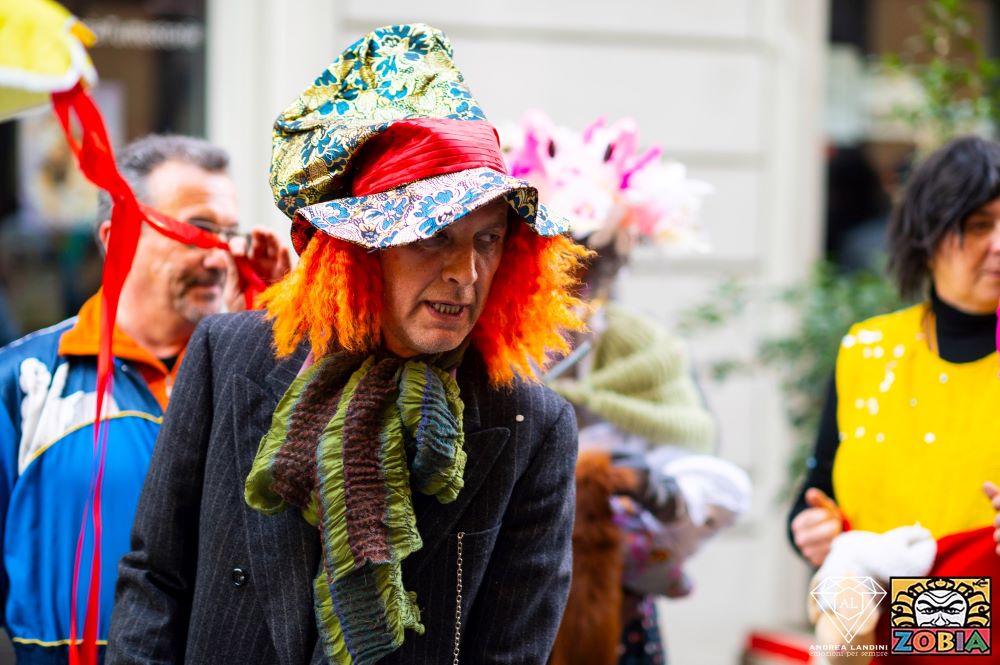
In Fiorenzuola d’Arda (Piacenza) the Mardi Gras celebration is known as Zobia and its tradition dates back to the Middle Ages.
The historic Carnival of Zobia owes its uniqueness to the parades of actors who perform engaging shows around the town, often in dialect and strictly without masks. The parade of handcrafted floats ends with the unmissable prize-giving ceremony and a big party.
Al “Castlein”: Castelnovo di Sotto’s Carnival
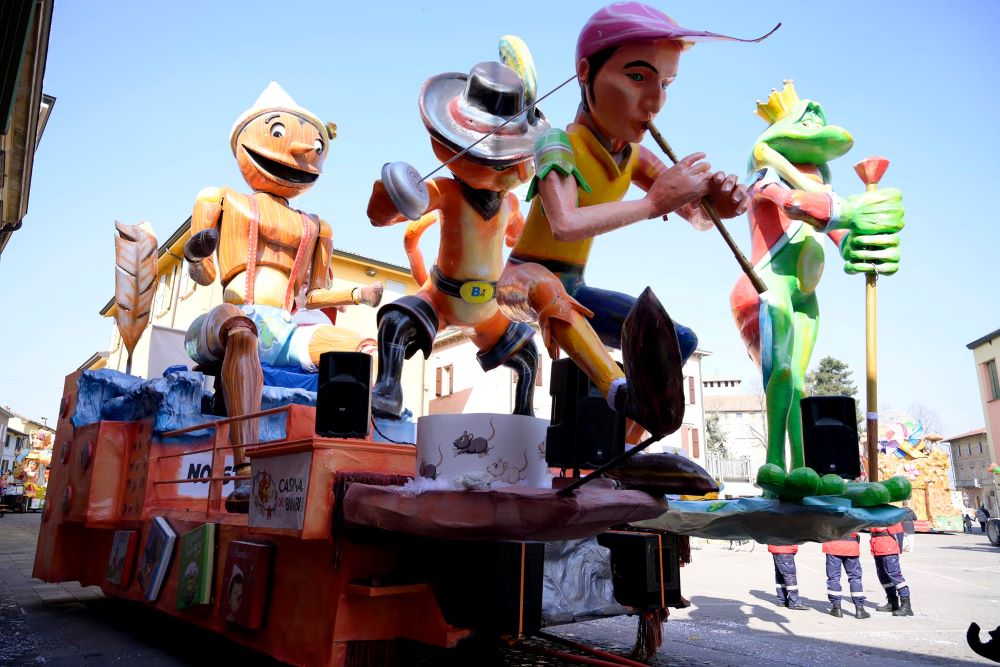
‘Castlein‘ is the typical mask of the Carnival in Castelnovo di Sotto that parades through the streets of this little town close to Reggio Emilia, under the festive gaze of young and old alike. Wearing armpit trousers, boots and a cap pulled down over his head, Castlein is the icon of a Carnival whose origins date back to 1885. He is not the only highlight of the festival though.
The event includes the traditional parade of floats and the presence of jugglers, clowns, children’s make-up artists, street performers and much more. Also not to be missed is the Carnival Mask Museum, which houses no less than 222 handcrafted masks.
Carnival of the Contrade in San Cesario sul Panaro
Masked parades, theatre shows, lots of games for children, as well as music and good food. That’s the Carnival of the Contrade in San Cesario sul Panaro, a few kilometres from Modena.
San Cesario’s is a rather recent festival compared to other historical carnivals in the region (the first edition was held in 1983), but it is no less popular. Masked adults and children gather every year at the Palacarnevale, right in the heart of the old town, to take part in the numerous events.
Spillo and Bertoldo: the Traditional Carnival of San Giovanni in Persiceto
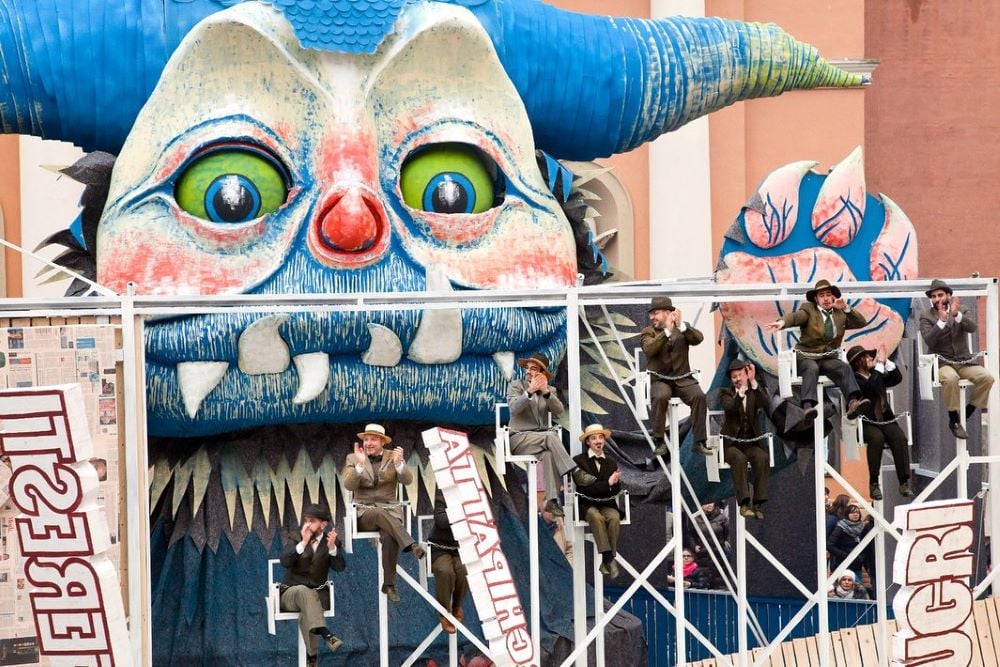
In addition to being one of the oldest carnivals in Emilia-Romagna, the Historical Carnival of San Giovanni in Persiceto recently submitted its candidature as a UNESCO intangible cultural heritage.
In fact, this Carnival certainly has a lot to offer in terms of entertainment and special effects. First introduced in 1874, the mask of Bertoldo opens the festival. He is a lively and resourceful peasant with brusque manners, inspired by the character of the same name created by the writer Giulio Cesare Croce, who inaugurates the Carnival by reciting a rhyming dialectal composition called zirudèla.
However, Bertoldo’s presence is not the only thing that makes the Persiceto Carnival so unique. The floats that line the streets of the town are not traditional ones: their peculiarity is called Spillo and consists in the change of their structure during the event. In other words, the floats undergo a carefully devised transformation, resulting in a real performance. There are teen companies competing during the Carnival, but only one receives the coveted final prize from the jury.
Cento Carnival, a European Carnival
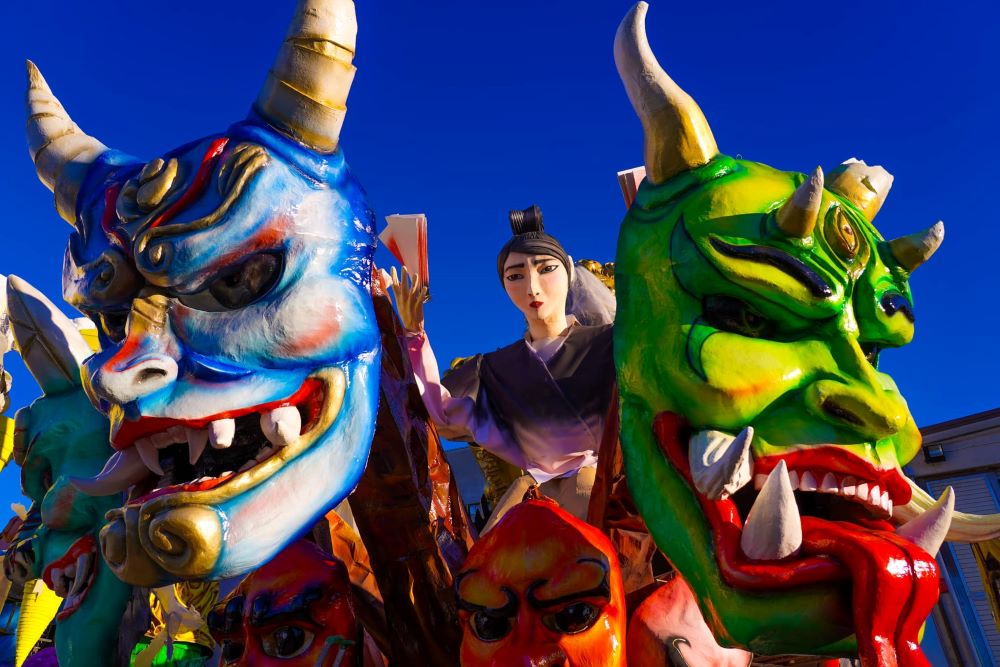
When it comes to awards, the Carnival of Cento holds the record in the region. Twinned with the Carnival in Rio de Janeiro and a candidate for UNESCO Intangible Cultural Heritage, the most important event in the town of Ferrara is also one of the longest-lived carnivals in Europe.
In fact, the oldest evidence of this Carnival dates back to the 16th century, confirmed by further evidence dating back to 1615, the year in which the famous Cento painter Guercino frescoed Casa Pannini with scenes of celebrations, parades and dances in the streets of the city.
Today, Cento boasts a long tradition in the art of papier-mâché cultivated by no less than five carnival associations, which results in the production of huge, spectacular floats. The Carnival programme naturally includes an award ceremony for the most impressive work, as well as dances, concerts and all kinds of events.
The beginning and end of the celebrations is marked by the figure of Tasi, the typical local Carnival mask wearing a top hat and a white fox, who is burnt at the end of the event in the Piazzale della Rocca during the traditional rite of the Tasi’s Last Will and Stake.
Pieve di Cento’s Carnival and Barbaspein
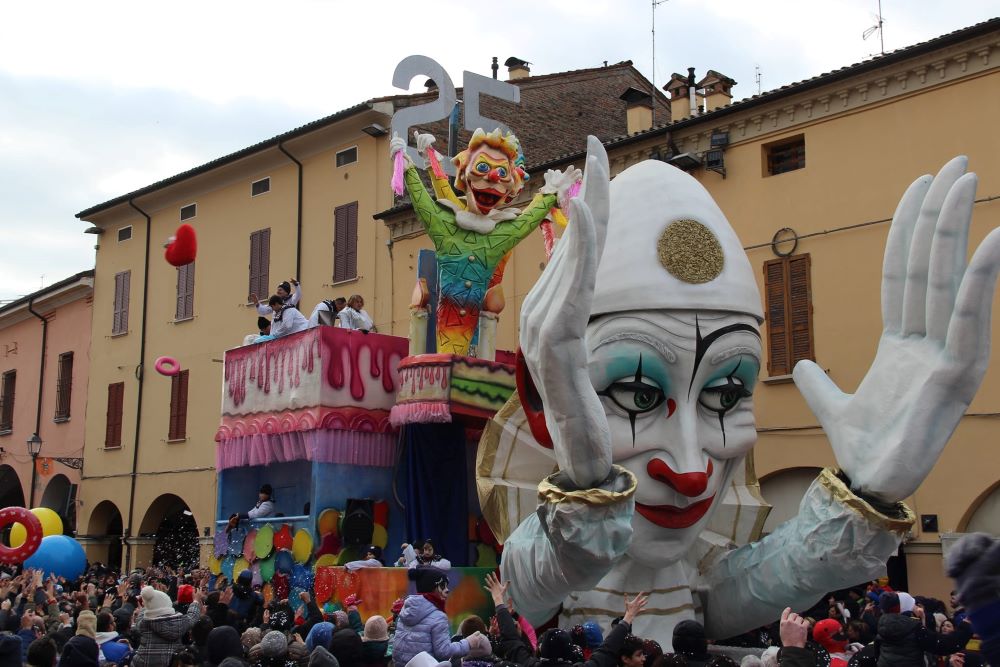
Another historical Carnival in Emilia-Romagna takes place not far from Cento. It is the Carnival in Pieve di Cento, or Carnevel d’la Piv as it is known in the local dialect. Here, in addition to musicians, DJs, dancers, jugglers and children’s make-up artists, the crowd is entertained by Barbaspein, the typical Pieve Carnival mask inspired by a real-life character.
We need to go back in time to the mid 19th century to find out more about his identity, the time when Barbaspein the beggar lived, a gourmand and a member of the society that organised the first Carnivals. Today, the jovial Barbaspein cheers up the festivities along with the colourful floats that travel through the town.
The Carnival in San Pietro in Casale and Sandròn Spaviròn
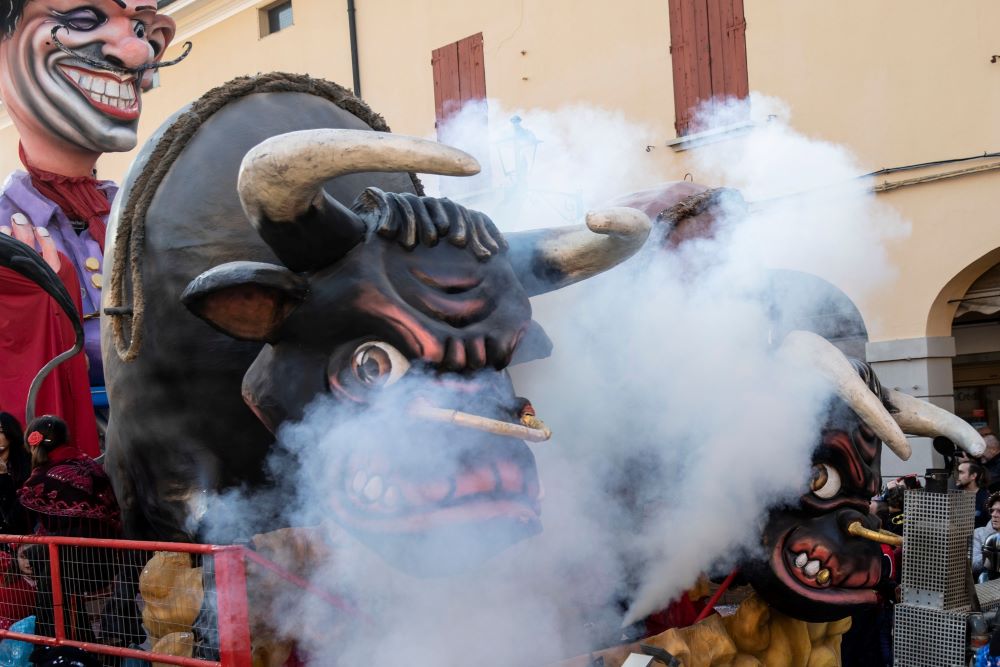
The protagonist of San Pietro in Casale’s Carnival, not far from Bologna, is also inspired by a real-life character with the curious name of Sandròn Spaviròn, who over time has become the official mask of the event.
As is the case with the Carnival of Cento, in San Pietro in Casale Carnival ends with the reading of the will and the burning of the mask, a very evocative show that rounds off the cheerful days of celebrations and their dances, parades and other events dedicated to families.
Pianoro’s Carnival
In Pianoro, Carnival is synonymous with papier-mâché. Here in the Bolognese Apennines the creation of allegorical floats has become to all intents and purposes an art form, handed down in schools and celebrated every year during the most colourful festival of all.
Much attention is also paid to the creation of the masks inspired by historical characters. On Carnival days, you cannot miss the traditional parade of floats.
Bazzano’s Carnival and the Barbazecch parade
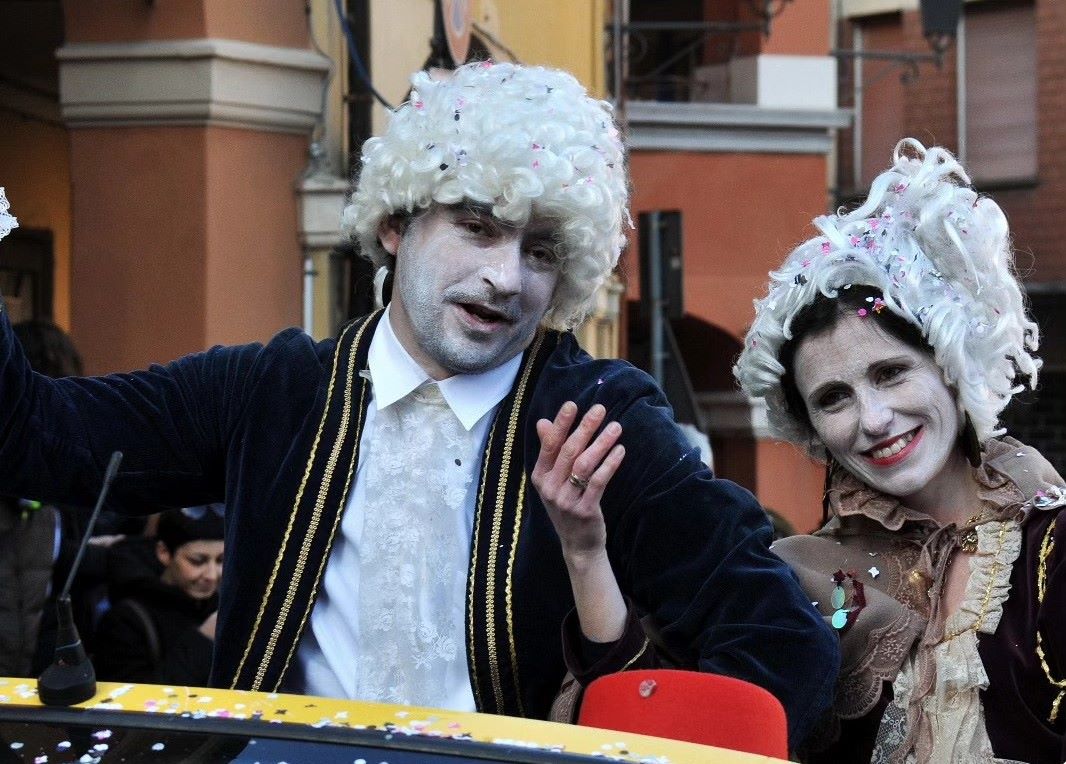
The star of the Bazzano (Valsamoggia) Carnival is “Barbazecch”, a historical mask dressed in elegant clothes and a white wig. During the festival, Barbazecch parades in a car with his wife through the streets of the town before reaching the main square, where he recites the traditional zirudela poem.
Founded in 1870 to entertain the townspeople and raise funds for the needy, today the Bazzano Carnival teams up with the “Children’s Carnival” and offers a show for young and old alike. In addition to the parade of floats, there will be concerts, food and the traditional charity lucky dip.
Imola’s Fantaveicoli Carnival
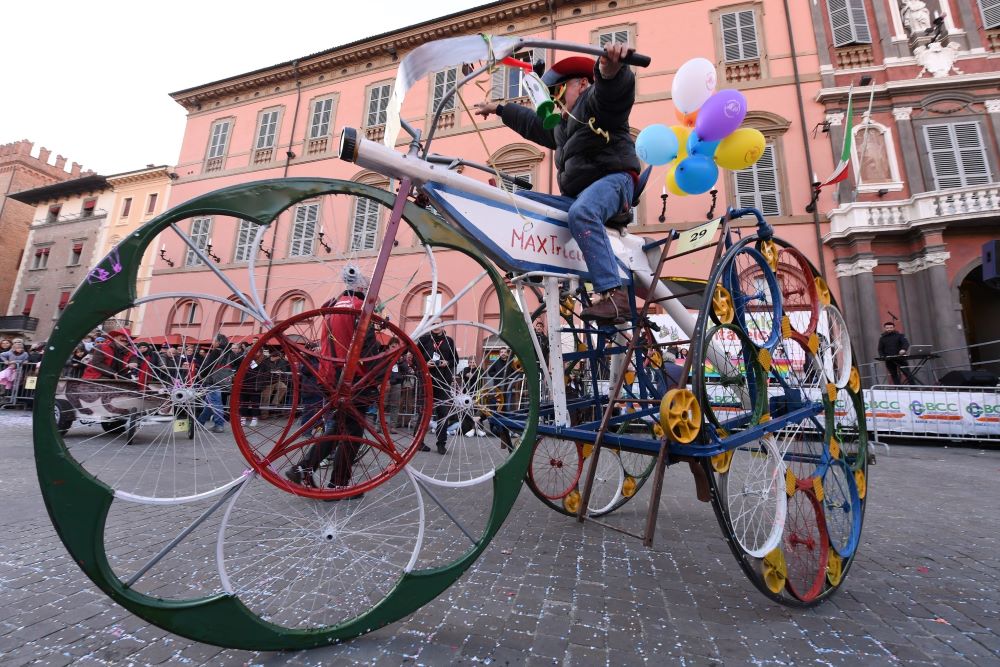
Recycling and creativity. These are the main ingredients of the Imola Carnival, better known as the Carnival of Fantaveicoli. What parade under the amused eyes of the public
are not the traditional papier-mâché floats, but rather vehicles made of recycled materials (wood, plastic, cardboard and so on) and operated in a eco-friendly manner (by hand, pedal, propeller, etc.).
In addition to the parade and prize-giving for the Fantaveicoli, the Imola Carnival includes a parade of fancy-dressed teams and a competition dedicated to children and their bicycles, which are also ‘disguised’.
Carnival in Borgo Tossignano: polenta and pasta
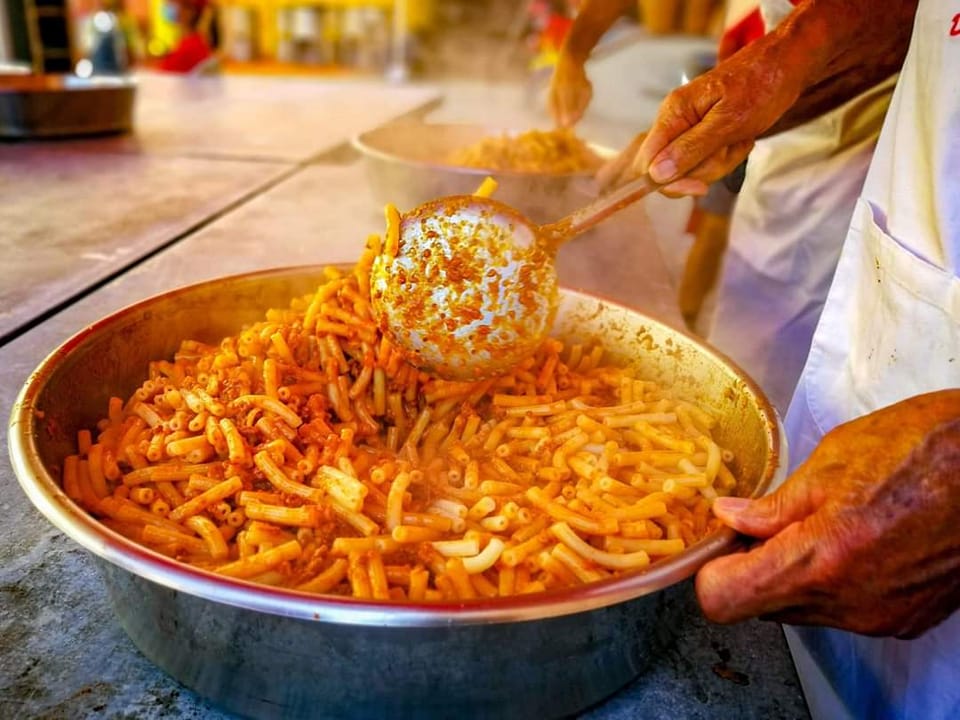
In Borgo Tossignano (Bologna), the usual carnival celebrations are combined with good food. During “Shrove Tuesday”, two gastronomic festivals are held in memory of a historical event dating back to the 17th century. Today’s “Sagra dei Maccheroni” and “Festa della Polenta” recall the time when Marquis Leonardo di Sermoneta had a plate of polenta distributed to the citizens to celebrate the last day of Carnival.
Having tasted the local delicacies, you can watch the parade of floats (also with a culinary theme) and many other shows.
Carnival of San Lazzaro in Borgo in Faenza
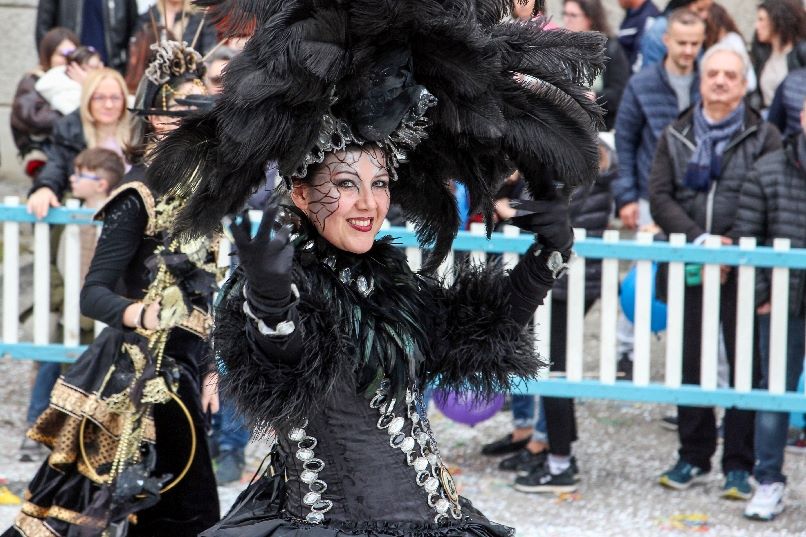
The history of the San Lazzaro in Borgo Carnival, held in Borgo Durbecco neighbourhood in Faenza, has very ancient roots. It is said that two weeks before Easter the inhabitants of the village would bring a gift of sweet tortelli and saba (grape syrup) to the sick in the leper hospital, located near the church of San Lazzaro, to brighten their days.
The sweet tortello with saba still remains the symbol of the Faenza feast, which includes a rich programme of events such as the parade of floats and masked groups, concerts, exhibitions, tours and other cultural activities.
San Grugnone Carnival in Conselice
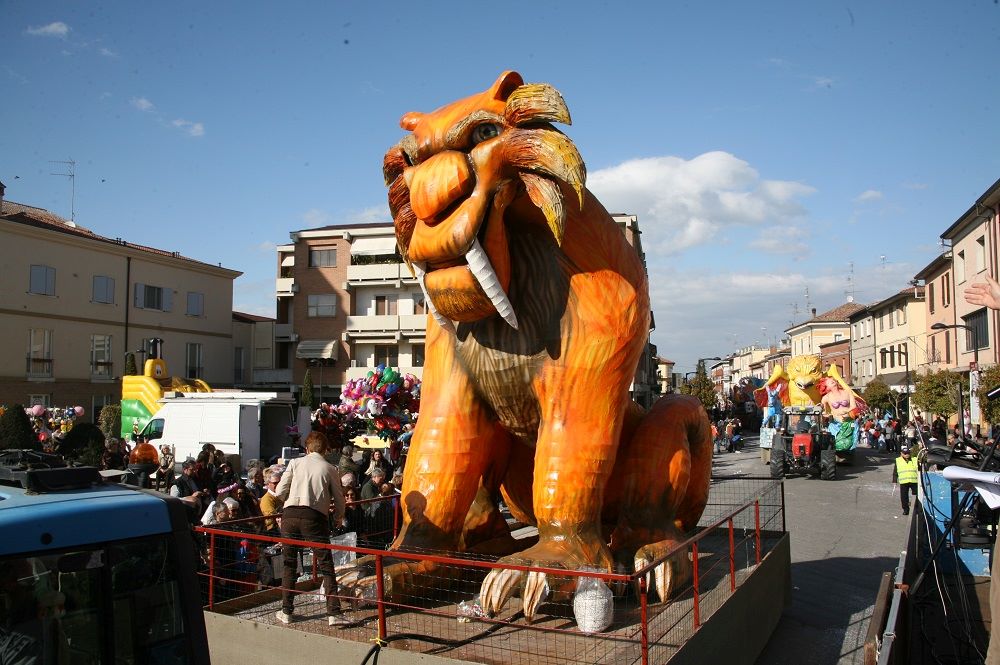
The Carnival in Conselice, in the province of Ravenna, has already celebrated its first centenary. Founded in 1919, the event owes its name to an anecdote with ancient origins. The day dedicated to San Grugnone (“e’ dè d’ Sén Grugnõn”) is said to be Ash Wednesday, or the first day of Lent, marking the end of Carnival. A day that was therefore greeted with a grimace of sadness – indeed, a grunt – because of the hardships it brought with it.
Today, the puppet of St Grugnone is carried through the streets of the town together with the ever-present floats.
Casola Valsenio Carnival, a Spring Festival
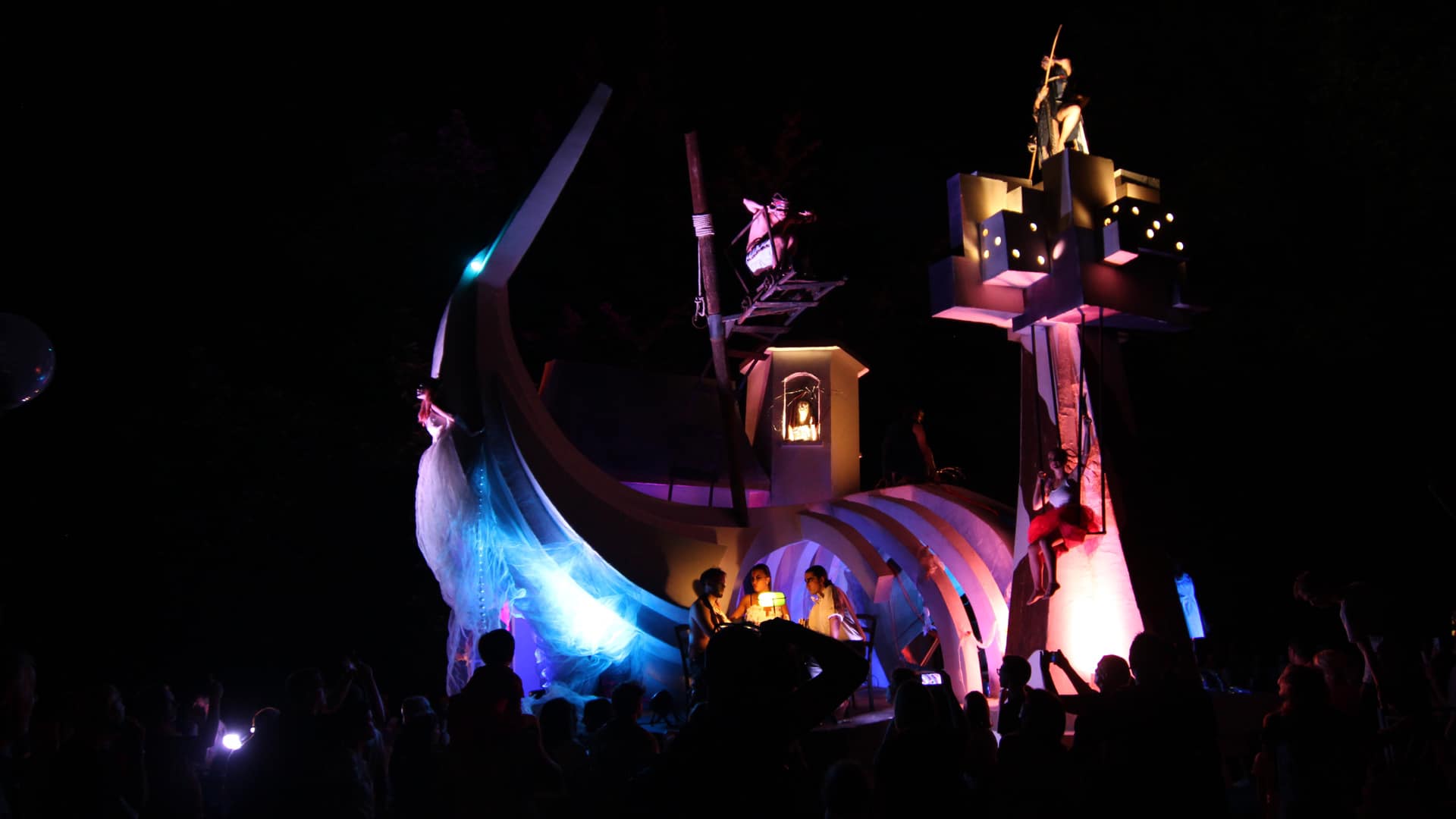
Among the Carnival festivals in Emilia-Romagna, the Carnival of Casola Valsenio is the only one that defines itself as ‘serious’. There are two reasons for this. On the one hand, the period in which it takes place is not that preceding Lent, as tradition would have it, but rather spring. Carnival in Casola dates back to 1891 as the Festa della Mezzaquaresima, a day when pre-Easter rigour was put aside to unleash the joy of dressing up, dancing and playing games of all kinds.
On the other hand, the floats parading during the Spring Festival – usually made of wood and plaster – are inspired by history, politics and current events rather than carnivalesque satire.
Segavecchia Carnival in Cotignola
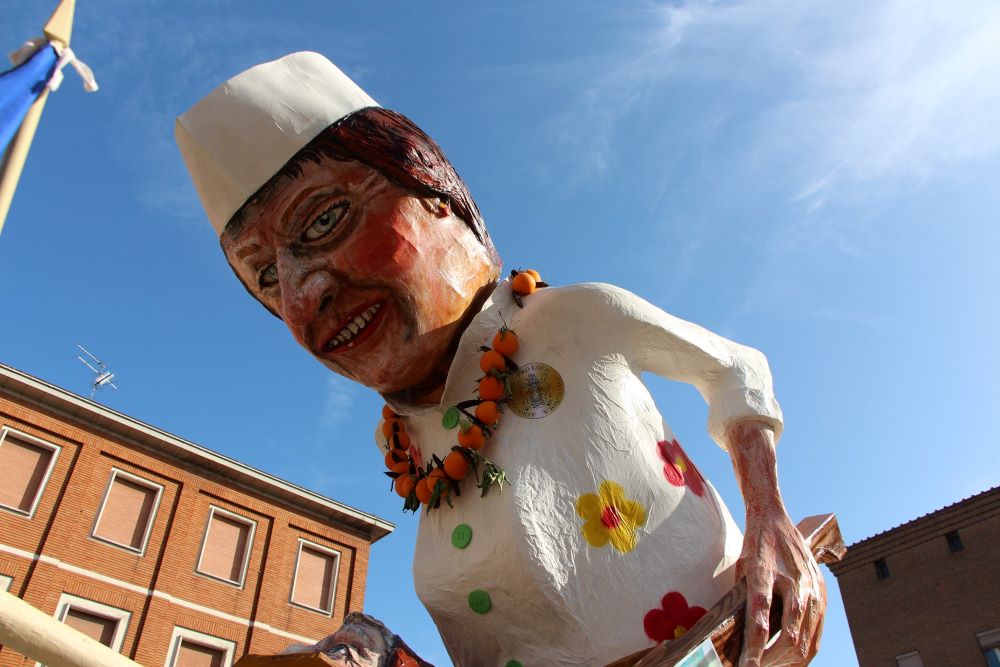
Like the Casola Valsenio Carnival, the Cotignola Carnival represents a playful and joyful interlude during the Lenten period. Tradition has it that in 1451 the Duke of Milan Francesco I, son of Muzio Attendolo Sforza of Cotignola, survived a curse cast by an old woman, who was then punished by being burnt at the stake. The Duke allowed his subjects to break the rule and celebrate Carnival in the middle of Lent in order to celebrate the happy event.
That is why even today at the end of the festivities, after the floats parade, people gather in the square for the burning of a big papier-mâché puppet depicting the so-called ‘Old Woman’.
Carnival in Civitella di Romagna
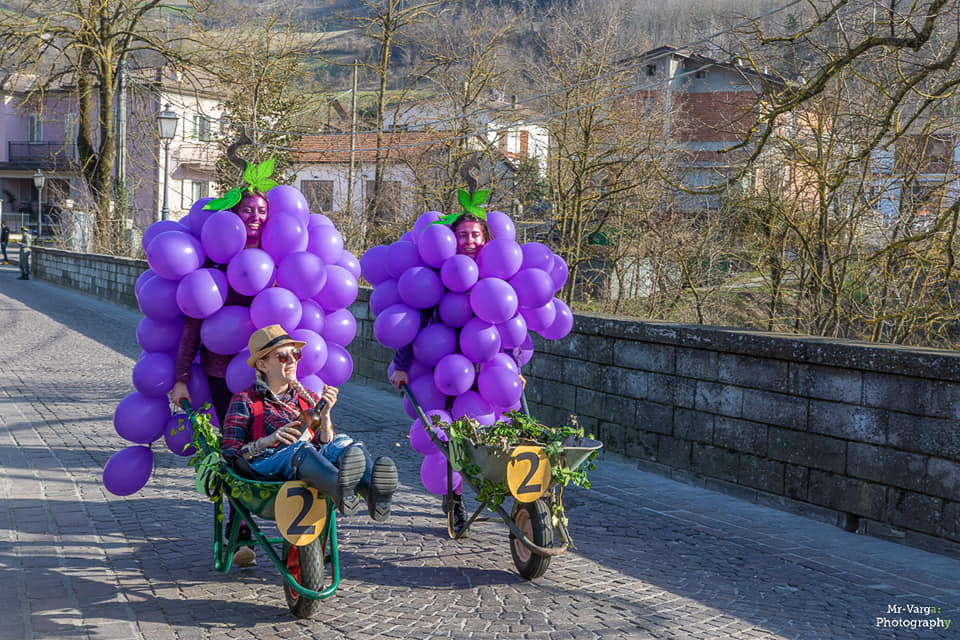
Since 1962, this Carnival has taken place against the backdrop of the rolling hills of Romagna, between the cities of Forlì and Cesena. The Historical Carnival of Civitella di Romagna is organised by the Civitella di Romagna Carnival Association in the month of February, featuring parades of disguised groups and travelling shows. Over the years, more and more attention has been paid to papier-mâché creations, the most commonly used material for the creation of floats.
Carnival of Forlimpopoli, or the Segavecchia Fair
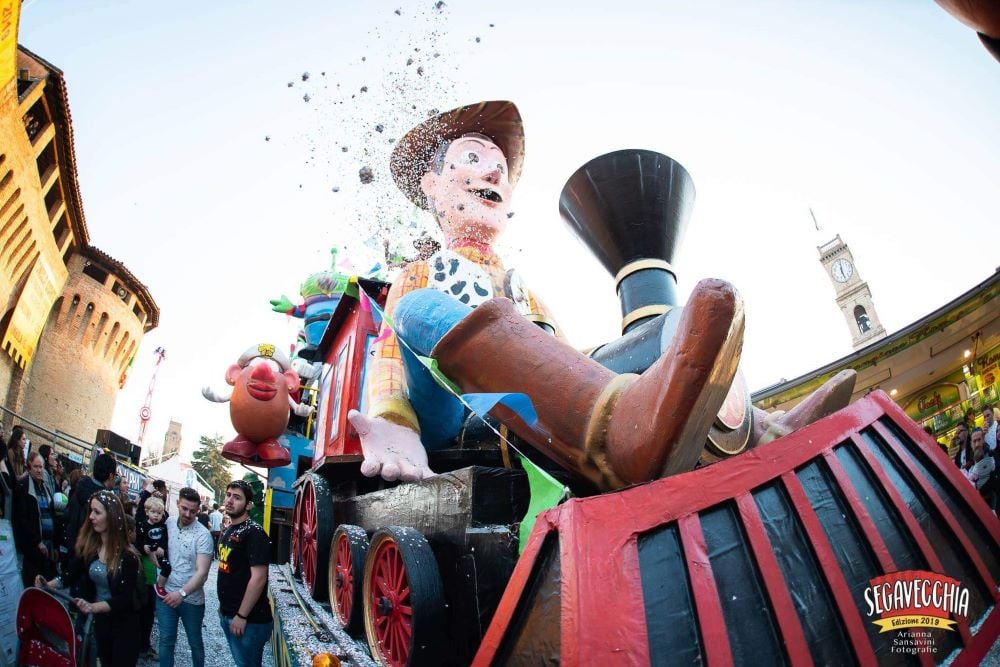
The history of the Forlimpopoli Carnival – again an event held at the beginning of Lent – has its roots in rural civilisation. The historical name ‘Fiera della Segavecchia‘ (Segavecchia Fair), which first appeared in 1914, is due to a rather bloody legend. The ‘old woman’ (vecchia in Italian) was actually a young pregnant woman, sawn in half for eating meat, specifically a raw sausage, and thus defying the rules of Lent. In order not to be recognised on the way to the gallows, she would disguise herself as an old woman.
Today, the Carnival programme includes a fun fair, concerts, markets and food stands, as well as parades of floats and masked processions.
Carnival in Gambettola
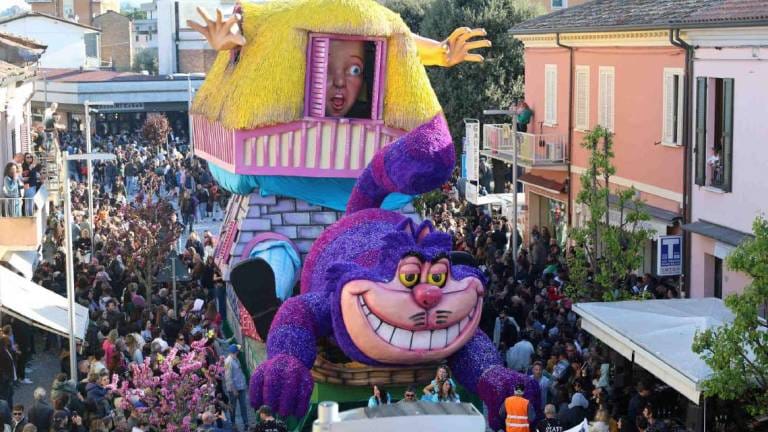
The list of historical Carnivals in Emilia-Romagna ends with the Carnival of Gambettola (Forlì-Cesena), an event that originated in 1886. In this corner of Romagna, celebrations are held on Easter Monday and the following Sunday, and revolve around parades of floats, accompanied by music, dancing and the throwing of sweets for the little ones.
But that is not all. On Carnival days, the town is decorated with Romagna-themed prints, papier-mâché masks hanging from houses and Carnival flags. Speaking of papier-mâché, since 2009 the town of Gambettola has had a workshop and a school dedicated to this precious material for Carnival celebrations.
Author

Maria Grazia Masotti
An eternal dreamer, but I try to stay grounded. I was raised in the countryside but I love big cities. I’m always ready for a trip, as long as it’s sustainable.
You may also like
Il Carnevale dei Fantaveicoli nella terra dei motori
by Celestina Paglia /// January 15, 2024
5 Carnival events not to be missed in Emilia-Romagna
by Elisa Mazzini /// January 29, 2025
Prima della Quaresima: i dolci del Carnevale
by Walter Manni /// February 4, 2016

Interested in our newsletter?
Every first of the month, an email (in Italian) with selected contents and upcoming events.
